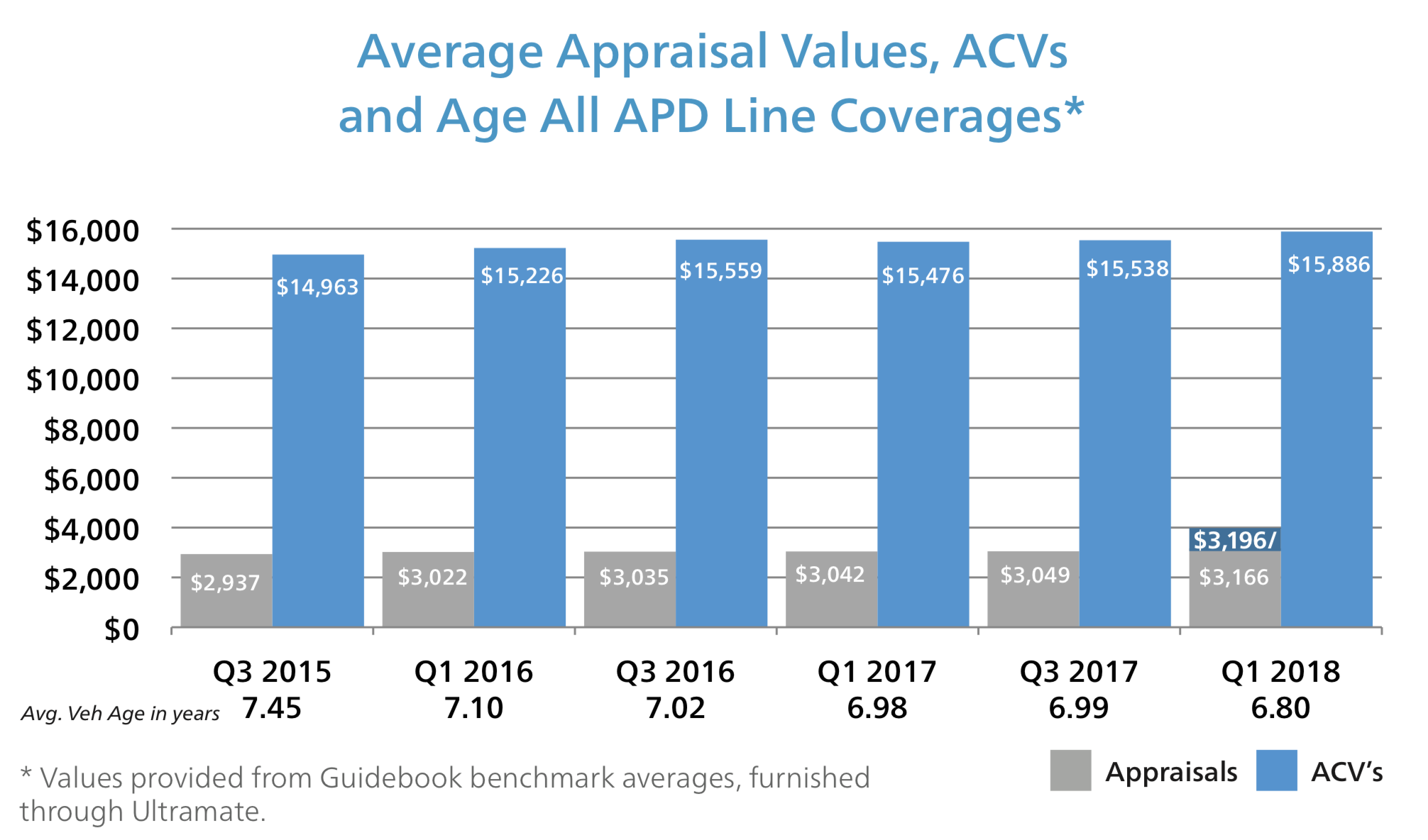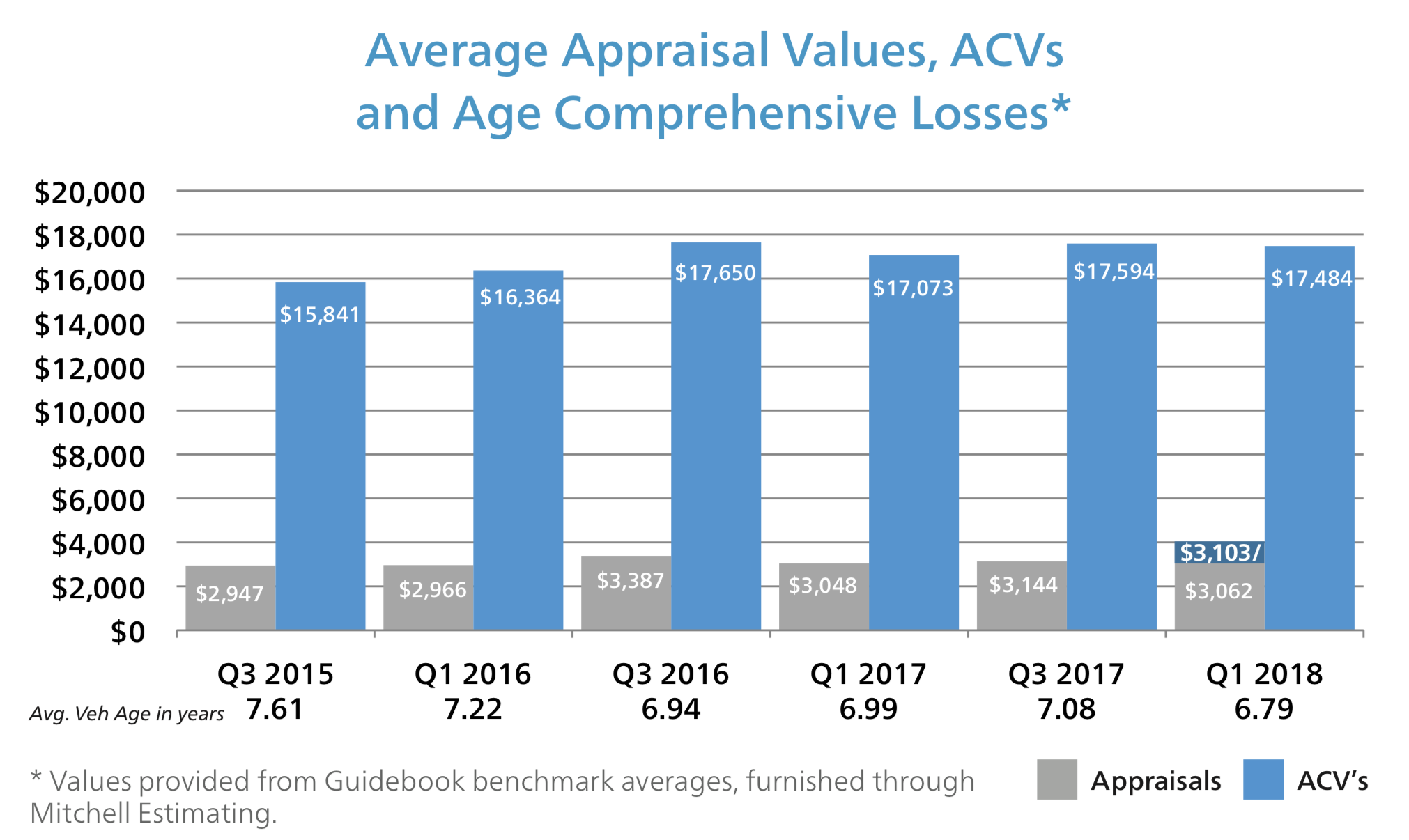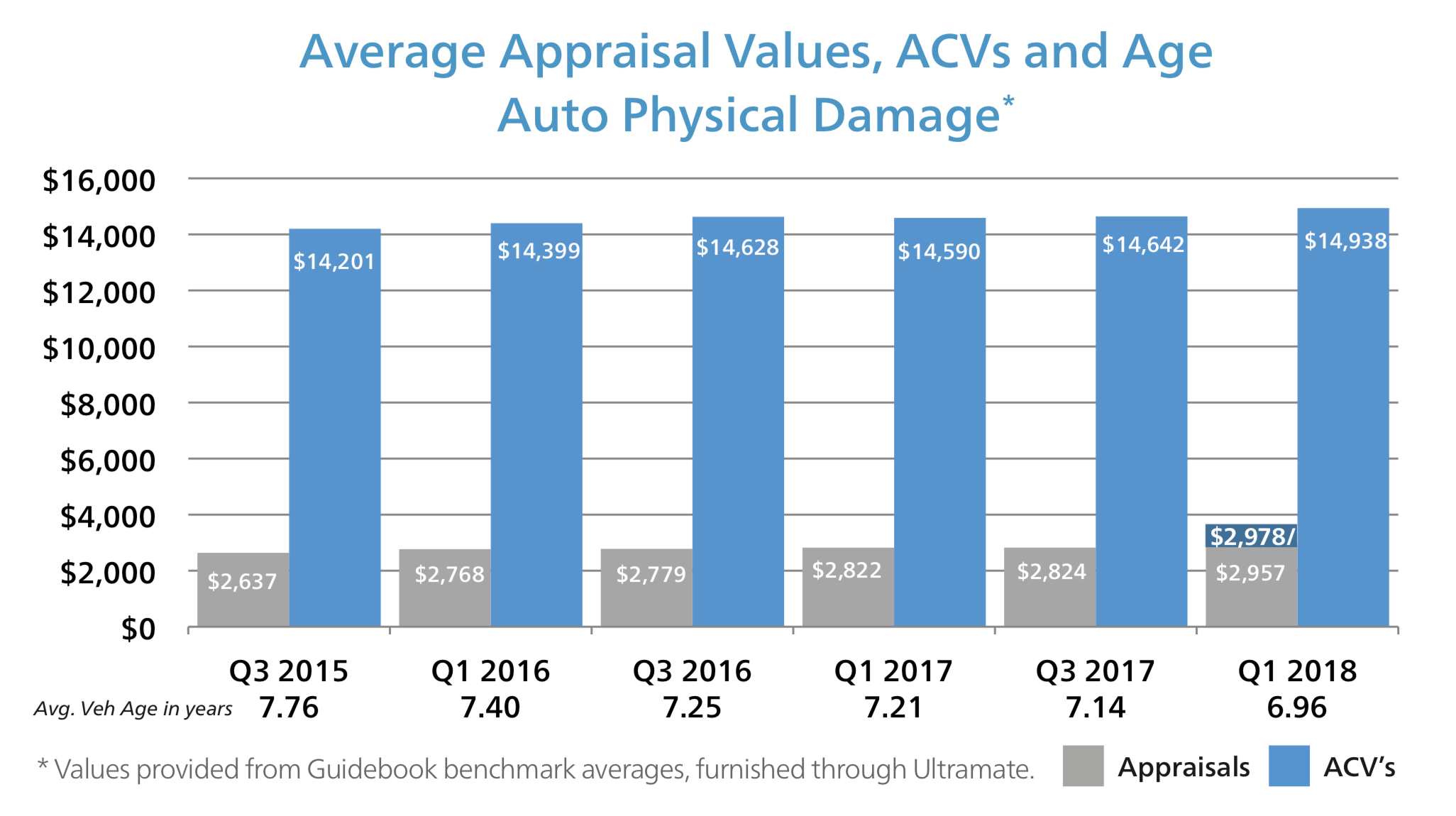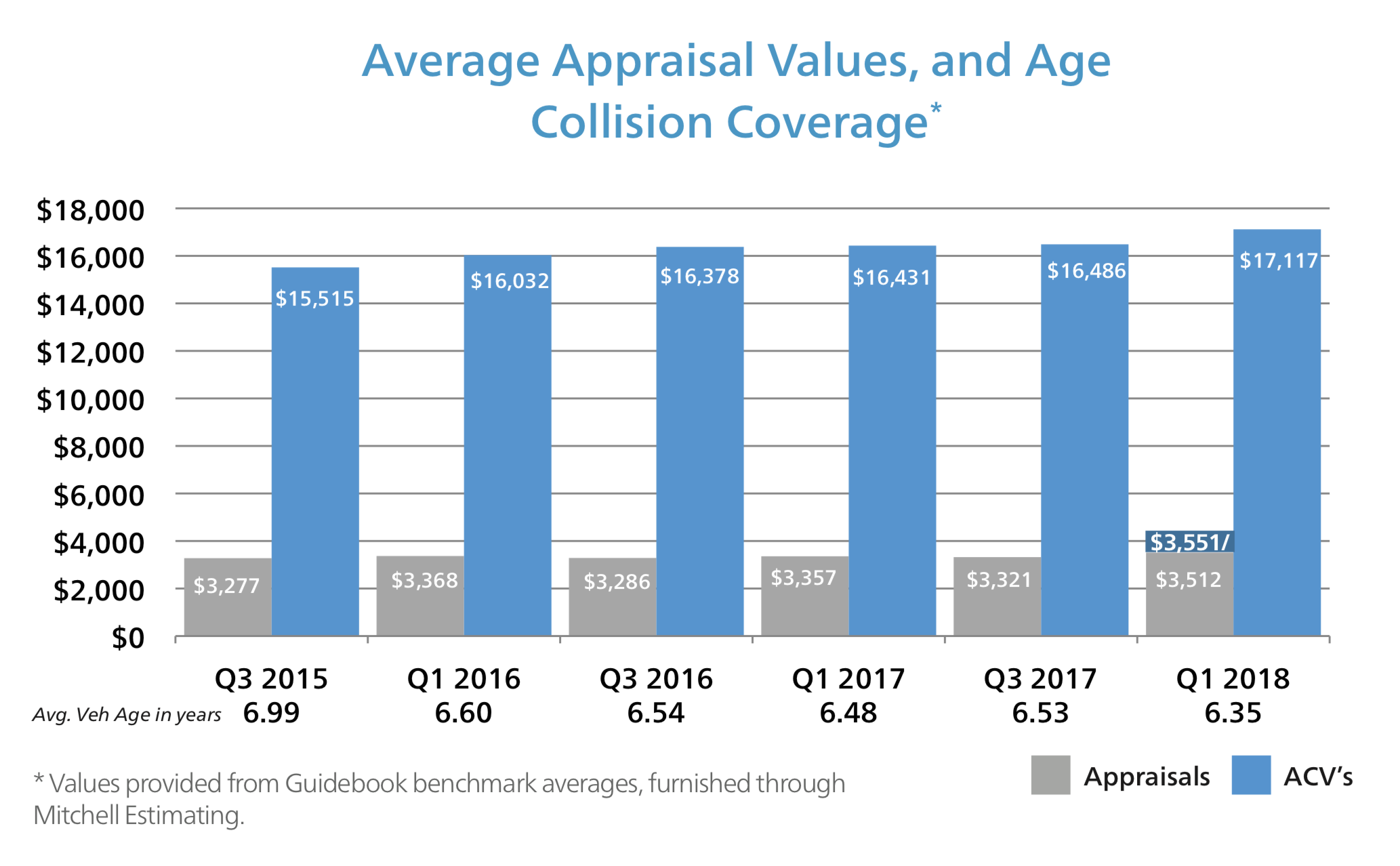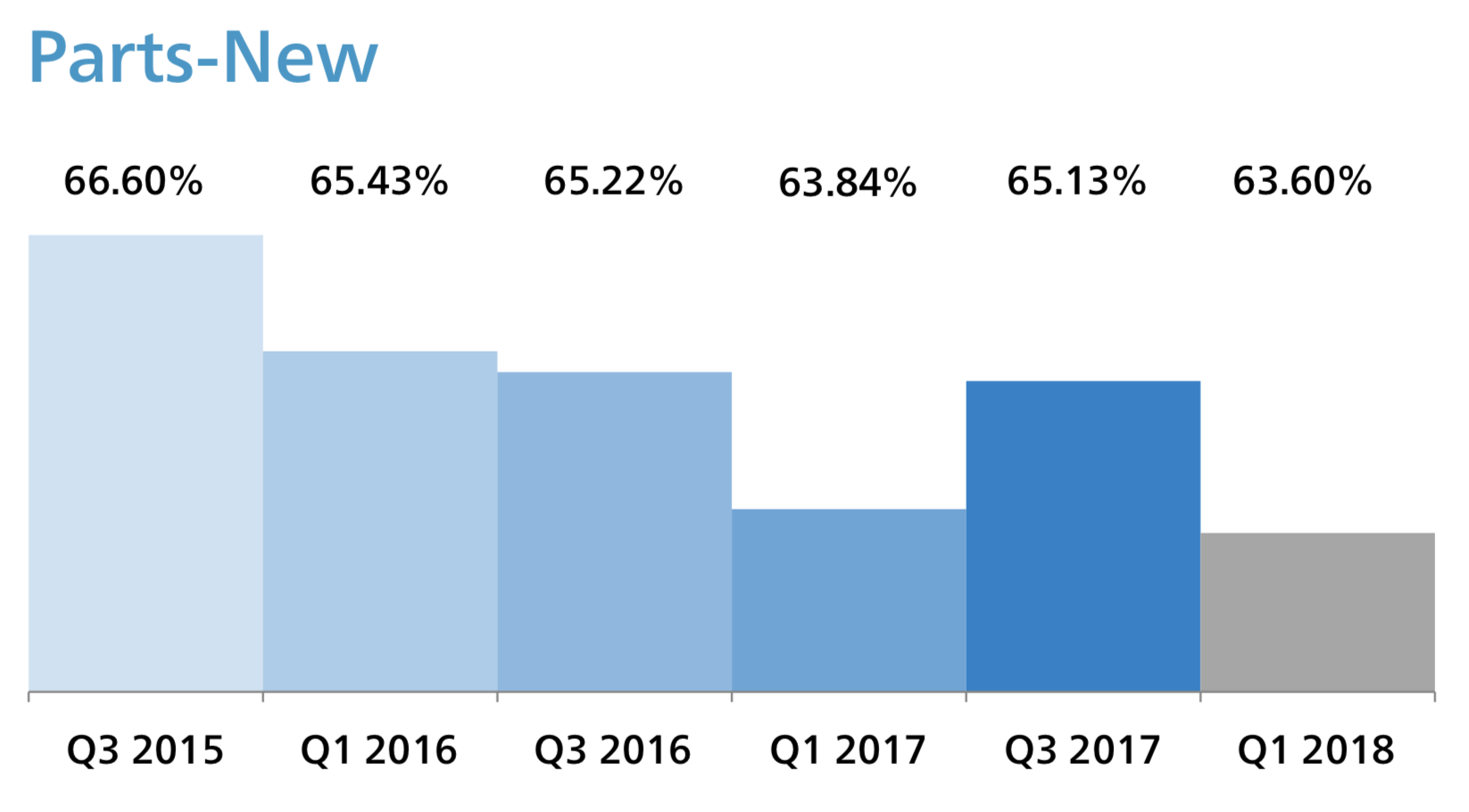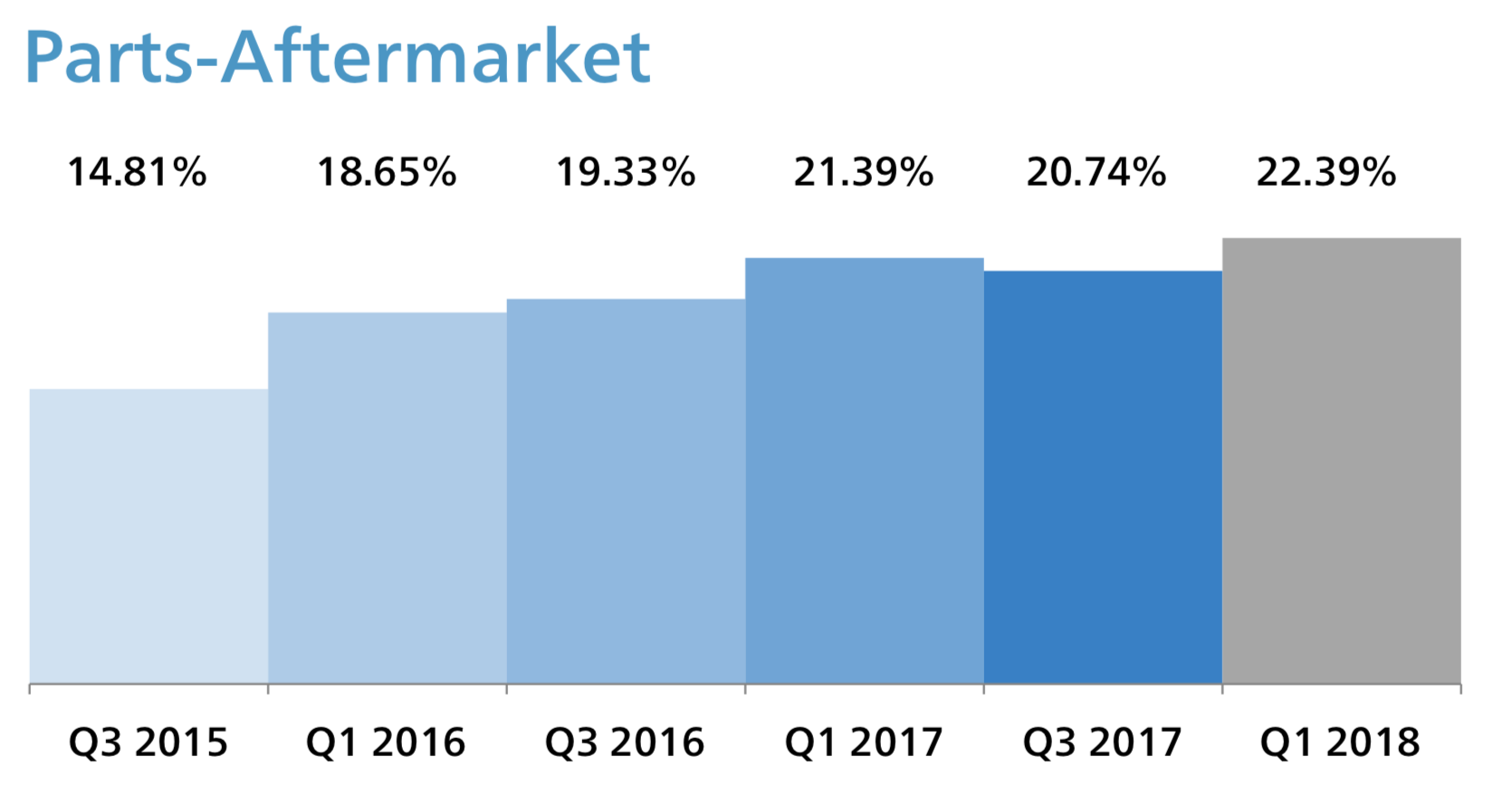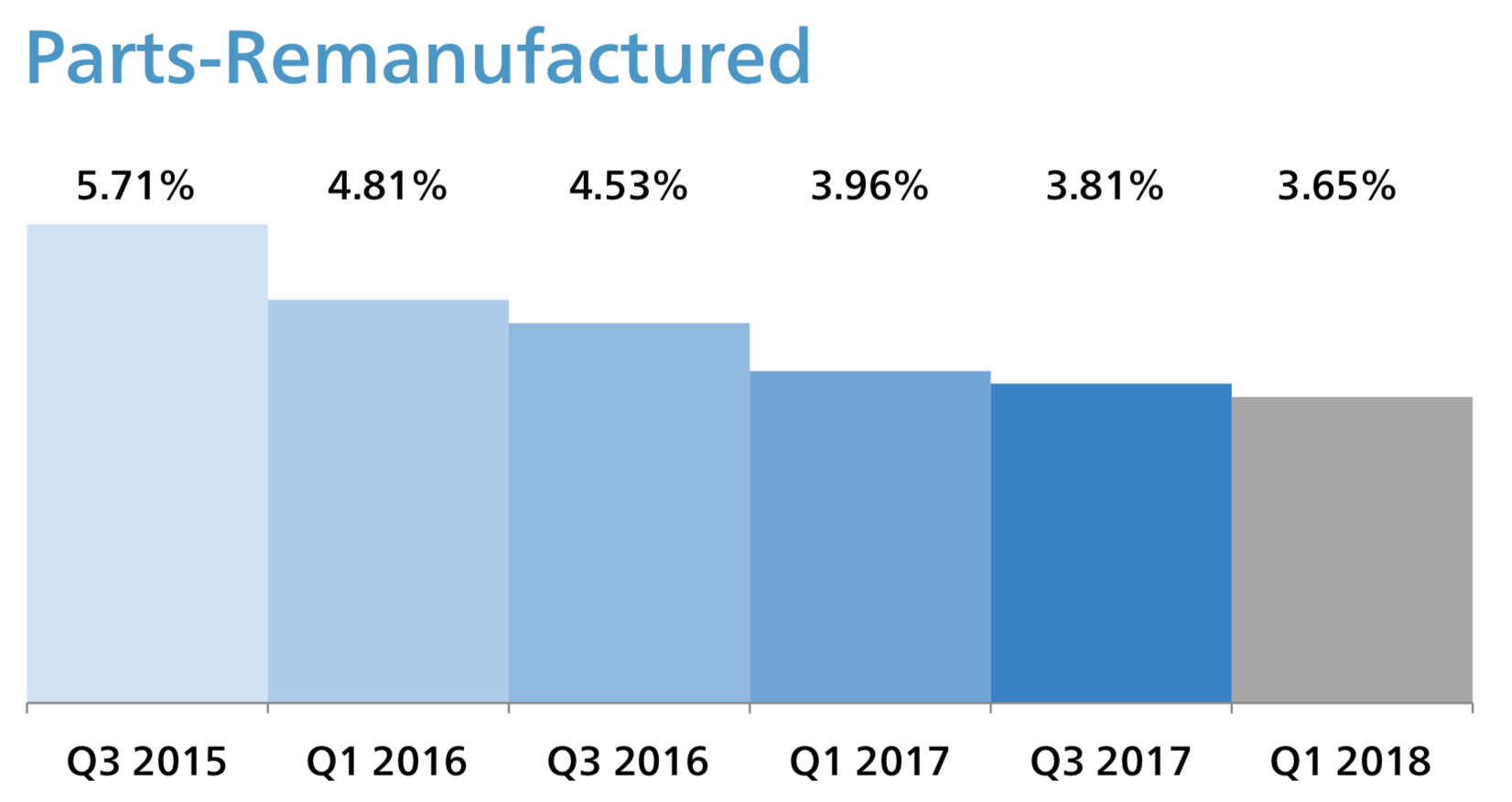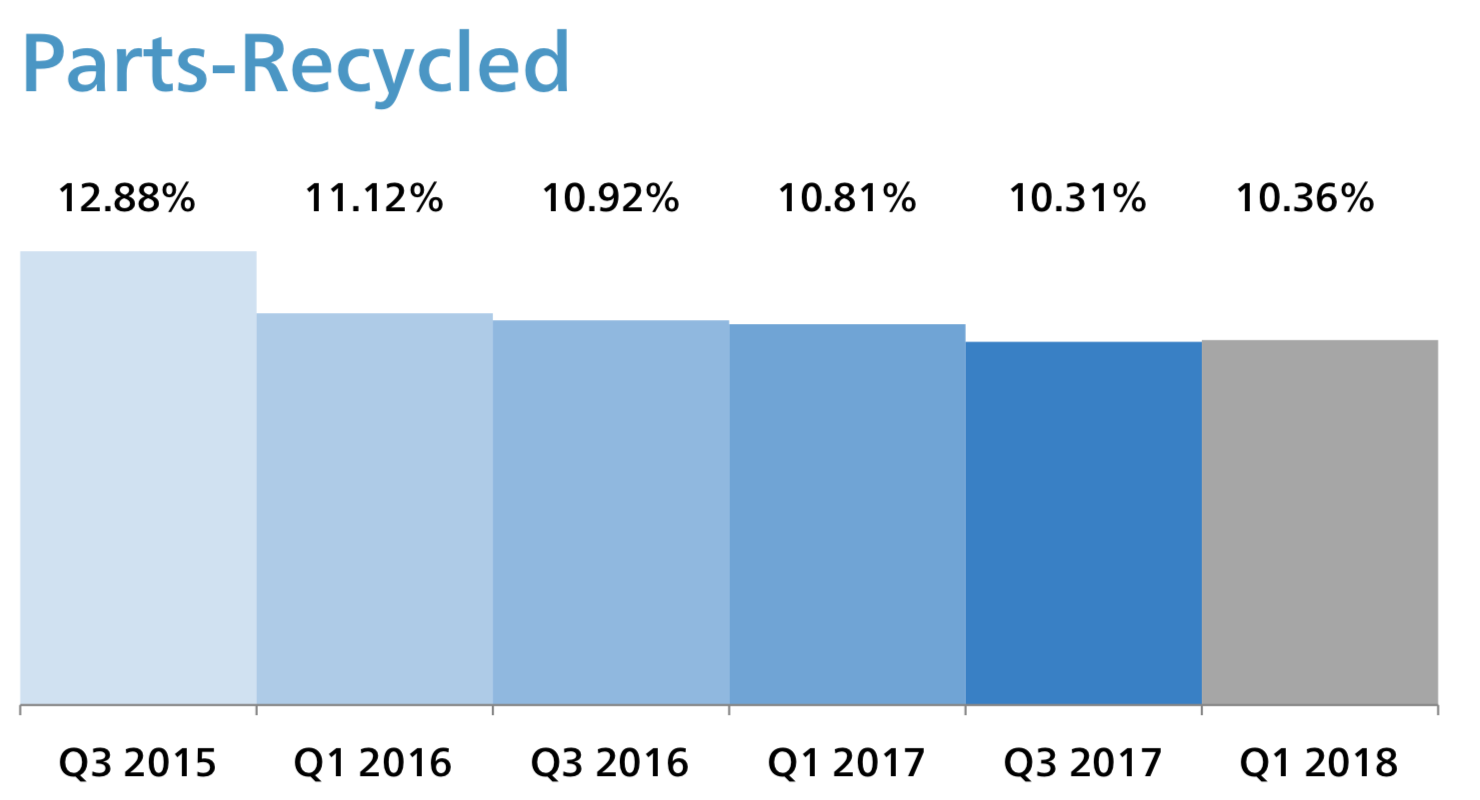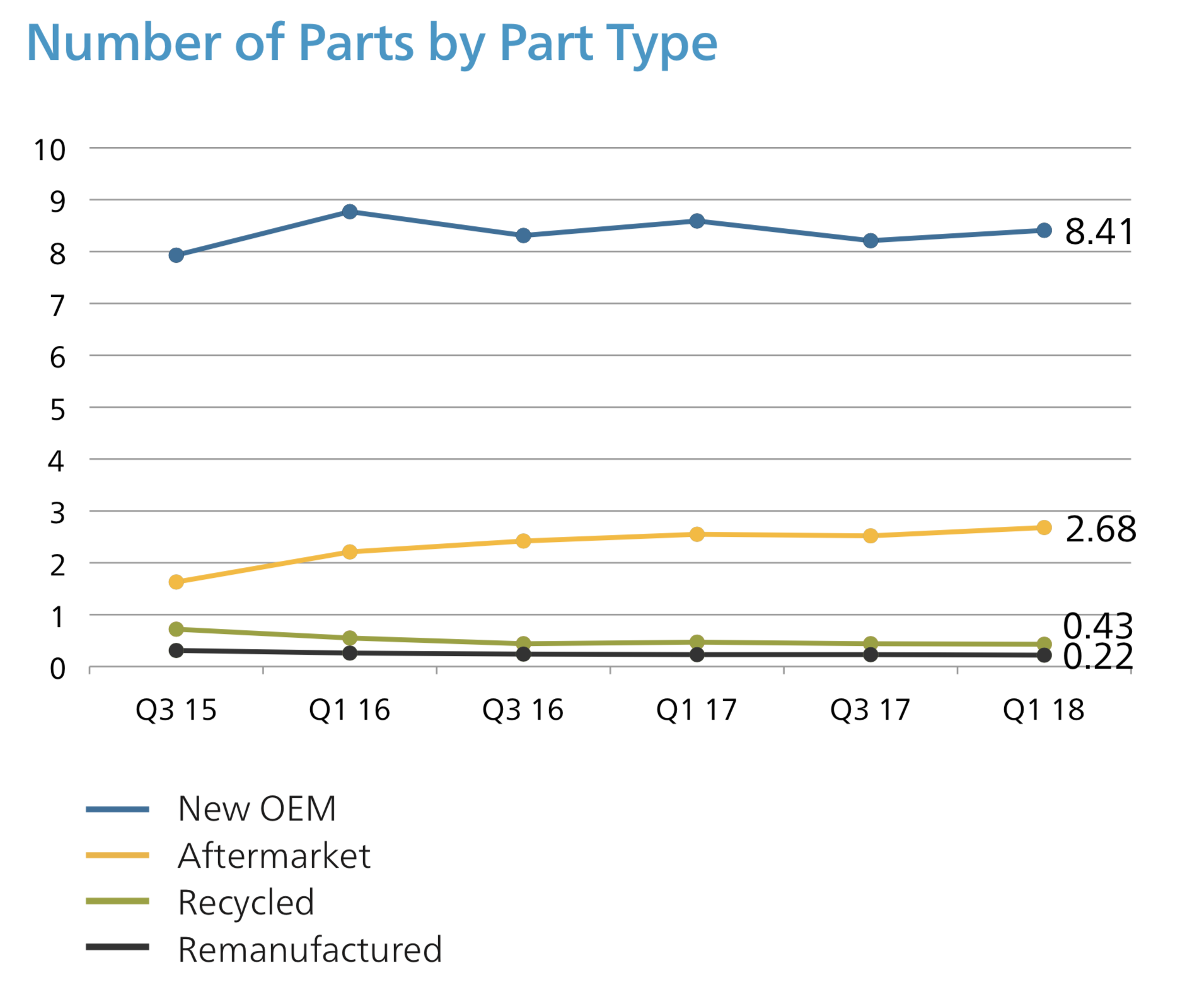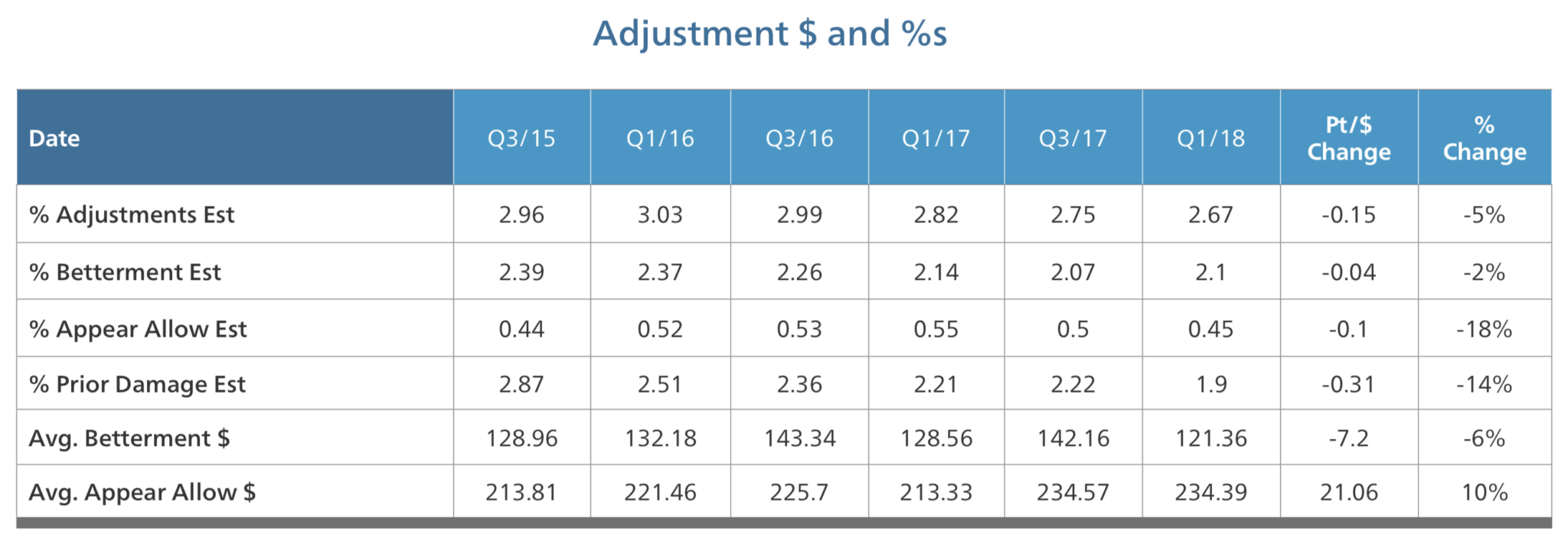Appraisal Values
The initial average appraisal value, calculated by combining data from all first and third-party repairable vehicle appraisals uploaded through Mitchell systems in Q1 2018, was $3,166, $124 more than this same period last year. Continued development suggests a final Q1 2018 average appraisal value of $3,196
Comprehensive Losses
In Q1 2018, the average initial gross appraisal value for comprehensive coverage estimates processed through our servers was $3,062, compared to $3,048 in Q1 2017. Factoring for development produces an increase in the adjusted value to $3,103.

Mitchell Cloud Estimating is the industry’s first truly cloud based platform, utilizing the latest technology to deliver innovative solutions to market faster than ever, to solve the needs of the estimators of today and tomorrow. Using Mitchell’s proprietary technology, this app simplifies the estimating process, letting you focus on proper and safe repairs and achieve effective business outcomes. Visit Mitchell’s website at www.mitchell.com/cloud-estimating.
Third-Party Property Damage
In Q1 2018, our initial average gross third-party property damage appraisal was $2,957 compared to $2,822 in Q1 2017, reflecting a $135 initial increase between these respective periods. Factoring for development yields an anticipated Q1 2018 adjusted appraisal value of $ 2,978, a $156 increase in average severity over Q1 2017.
Collision Losses
Mitchell’s Q1 2018 data reflects an initial average gross collision appraisal value of $3,512, $155 more than the same period last year. Continued development suggests a final Q1 2018 average gross collision appraisal value of $ 3,551.

Mitchell’s Quality Recycled Parts (QRP) program is the most comprehensive source for finding recycled parts, providing online access to a parts database compiled from a growing network of more than 800 of the highest quality recyclers in North America and Canada. QRP is fully integrated with UltraMate / UltraMate Premier Suite for total ease-of-use. For more information on QRP, visit Mitchell’s website at www.mitchell.com.
Supplements
As it generally takes at least three months following the original date of appraisal to accumulate most supplements against an original estimate of repair, we report (and recommend viewing supplement information) three months after-the-fact, to obtain the most accurate view of this data.
In Q1 2018, 42.05% of all original estimates prepared by Mitchell-equipped estimators were supplemented one or more times. In this same period, the pure supplement frequency (supplements to estimates) was 67.67%, reflecting a 2.72 point increase from that same period in 2017. The average combined supplement variance for this quarter was $936.39, $36.84 higher than in Q1 2017.
Parts Analysis
Parts Type Definitions
Original Equipment Manufacturer (OEM):
Parts produced directly by the vehicle manufacturer or their authorized supplier and delivered through the manufacturer’s designated and approved supply channels. This category covers all automotive parts, including sheet metal and mechanical parts.
Aftermarket:
Parts produced and/or supplied by firms other than the Original Equipment Manufacturer’s designated supply channel. This may also include those parts originally manufactured by endorsed OEM suppliers, which have later followed alternative distribution and sales processes. While this part category is often only associated with crash replacement parts, the automotive aftermarket also includes a large variety of mechanical and custom parts.
Non-New/Remanufactured:
Parts removed from an existing vehicle that are cleaned, inspected, repaired and/or rebuilt, usually back to the original equipment manufacturer’s specifications, and re-marketed through either the OEM or alternative supply chains. While commonly associated with mechanical hard parts such as alternators, starters and engines, remanufactured parts may also include select crash parts such as urethane and TPO bumpers, radiators and wheels.
Recycled:
Parts removed from a salvaged vehicle and re-marketed through private or consolidated auto parts recyclers. This category commonly includes all types of parts and assemblies, especially body, interior and mechanical parts.
Original Equipment Manufacturer (OEM) Parts Use in Dollars
In Q1 2018, OEM parts represented 63.6% of all parts dollars specified by Mitchell-equipped estimators. This represents a decrease of 0.24 points from Q1 2017
Aftermarket Parts Use in Dollars
In Q1 2018, 22.39% of all parts dollars recorded on Mitchell appraisals were attributed to Aftermarket sources, up one point from Q1 2017.
Remanufactured Parts Use in Dollars
As a percentage of total parts dollars, remanufactured parts dollars continued to decline, with Q1 2018 representing the lowest of all charted values at 3.65%.
While there isn’t a perfect correlation between the types of parts specified by estimators and those actually used during the course of repairs, we feel that the following observations are directionally accurate for both the insurance and auto body repair industries. This section illustrates the percentage of dollars allocated to each unique part-type. As a general observation, recent data show that parts make up 46% of the average value per repairable vehicle appraisal, which represents over $1,400 in average spend per estimate.
Recycled Parts Use in Dollars
Recycled parts constituted 10.36% of the average parts dollars used per appraisal during Q1 2018, reflecting a 0.45% decrease from Q1 2017.
The Number of Parts by Part Type
In order to capture another aspect of parts use, we calculate the number of parts used by part type on a repairable estimate. In comparing Q1 2018 to the same quarter in 2017, aftermarket parts usage increased to an average 2.68 parts per estimate. At the same time, new OEM, Remanufactured, and Recycled parts usage decreased.
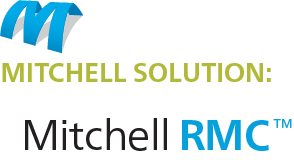
Mitchell’s Refinishing Materials Calculator (RMC) provides accurate calculations for refinishing materials costs by incorporating a database of more than 8,500 paint codes from eight paint manufacturers. It provides job-specific materials costing according to color and type of paint, plus access to the only automated, accurate, field-tested, and industry-accepted breakdown of actual costs of primers, colors, clear coats, additives and other materials needed to restore vehicles to pre-accident condition. For more information on RMC, visit Mitchell’s website at www.mitchell.com.
Adjustments
In Q1 2018, the percentage of adjustments made to estimates was down compared to the same period last year. The frequency of betterment taken decreased by 2%, while the average dollar amount of the betterment taken dropped by 6% to $121.36. Appearance allowance frequency also dropped, while the dollar amount of that appearance allowance increased to $234.39.
Labor Analysis
For 2018 year-to-date, average body labor rates remained mostly fat compared to 2017, with California, Florida, and Texas showing modest increases.


